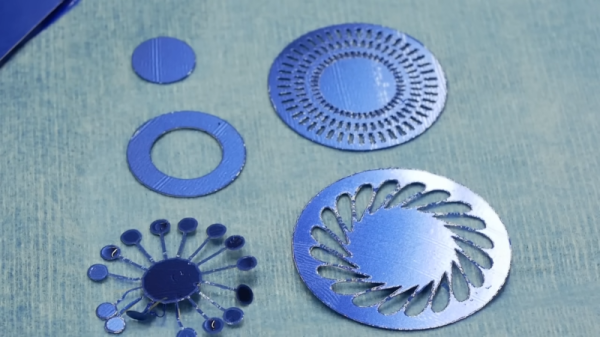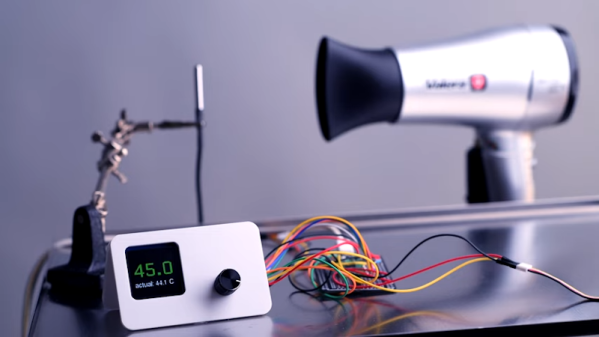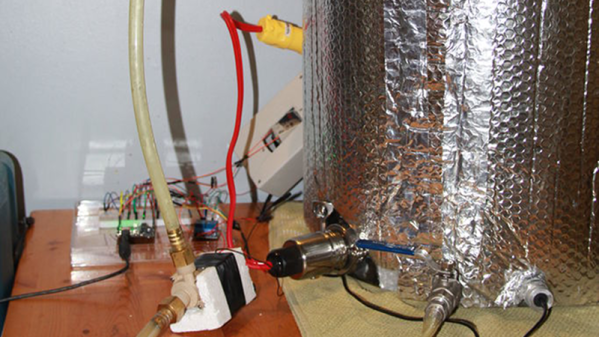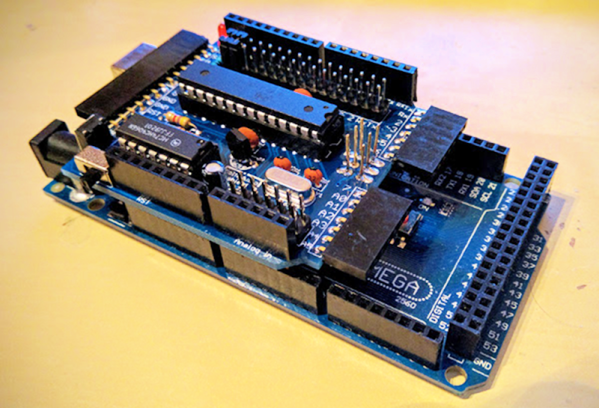Here’s something remarkably displeasant. Can you cook a steak with glue? [Dom] and [Chris] from ExplosiveDischarge have cooked a steak using a huge, huge amount of two-part epoxy. The chemistry behind this is just the exothermic reaction when two-part epoxy kicks off, and yes, the steak (a very thin cut) was sufficiently wrapped and protected from the hot sticky goo. What were the results? An overcooked steak, actually. This isn’t a sous vide setup where the temperature ramps up to 50°C and stays there — the temperature actually hit 80°C at its peak. There are a few ways to fix this, either by getting a thicker cut of steak, adding some bizarre water cooling setup to keep the temperature plateaued at a reasonable temperature.
This is your weekly reminder for the Repairs You Can Print contest.
We’ve got a twofer for awesome remote-controlled hovering stuff. The first is a 1:8 scale Harrier. This plane designed and built by [Joel Vlashof] will be a reasonably accurate model of a Harrier, capable of VTOL. It’s built around a huge 130mm EDF, powered by 2x6s lipos, and stabilized with a kk2.1 flight controller with VTOL software. This is as accurate a Harrier that you’re going to get in such a small format, and has the cool little spinny vanes that allow the beast to transition from vertical to horizontal flight.
Want some more cool hovering things? [Tom Stanton] is building a remote controlled Chinook. Yes, that helicopter with two main rotors. The usual way of doing this is with proper helicopter control systems like collectives and Jesus nuts. [Tom]’s building this version with standard quadcopter technology, mounting a motor to a servo, and doubling it up, and mounting it on a frame. In effect, this RC Chinook is the tail boom of a tricopter doubled up on a single frame. It does fly, and he’s even built a neat foamboard body for it.
SpaceX’s Falcon Heavy is going to do something next Tuesday, sometime in the afternoon, east coast time. Whatever happens, it’s going to be spectacular.
Hey, it’s time for a poll. I need to decide between ‘tide pod’ and ‘solo jazz’. For what I’m doing, the cost and effort are the same, I just need to know which is more aesthetic, cool, or whatever. Right now it’s 50:50. One must be crowned victorious!
Here’s the stupidest thing you’re going to see all year. That’s someone looping a quadcopter in front of a Frontier A320 (Probably. Seems too big for a 319 and too small for a 321) on approach. This guy is 3.6 miles East of runway 25L at McCarran Internation in Las Vegas, at an altitude far above the 400-foot limit. Judging from the video and the wingspan, this quad came within 200 feet of a plane carrying at least 150 people. It’s the stupidest thing you’ve ever seen, so don’t do it. It’ll be great to see the guy responsible for this in jail.


















